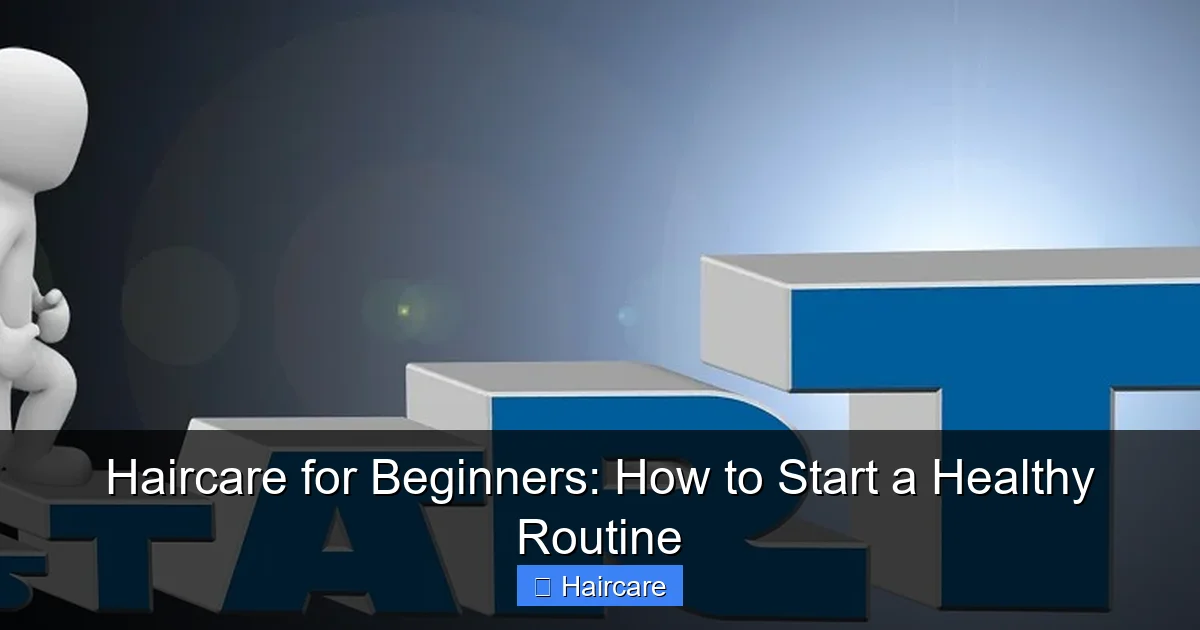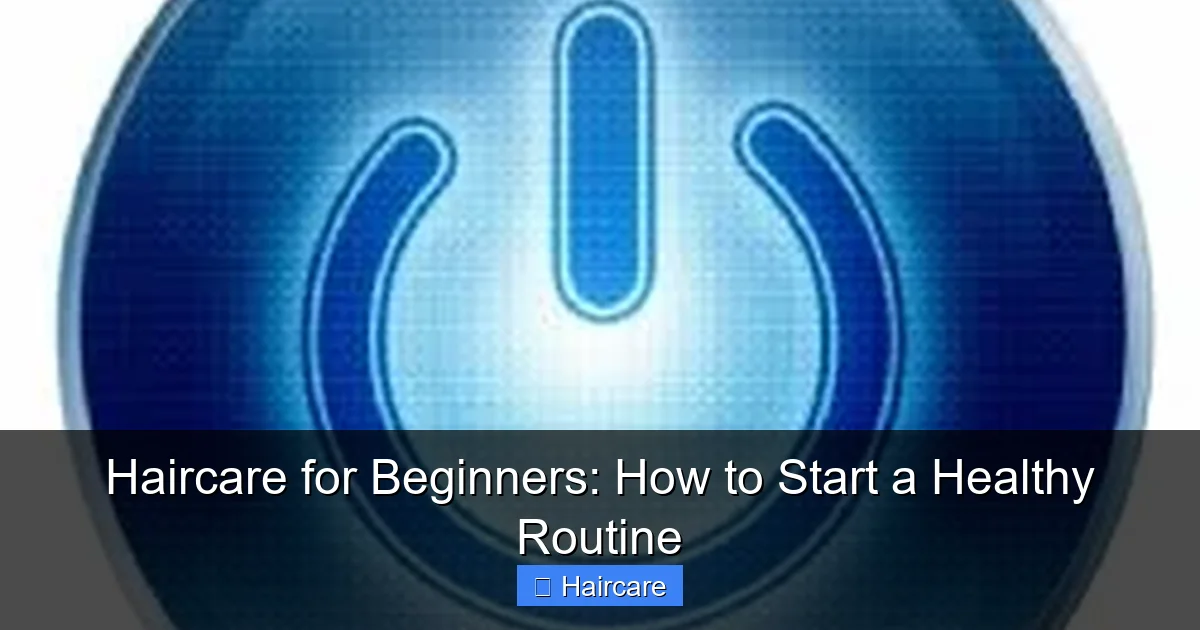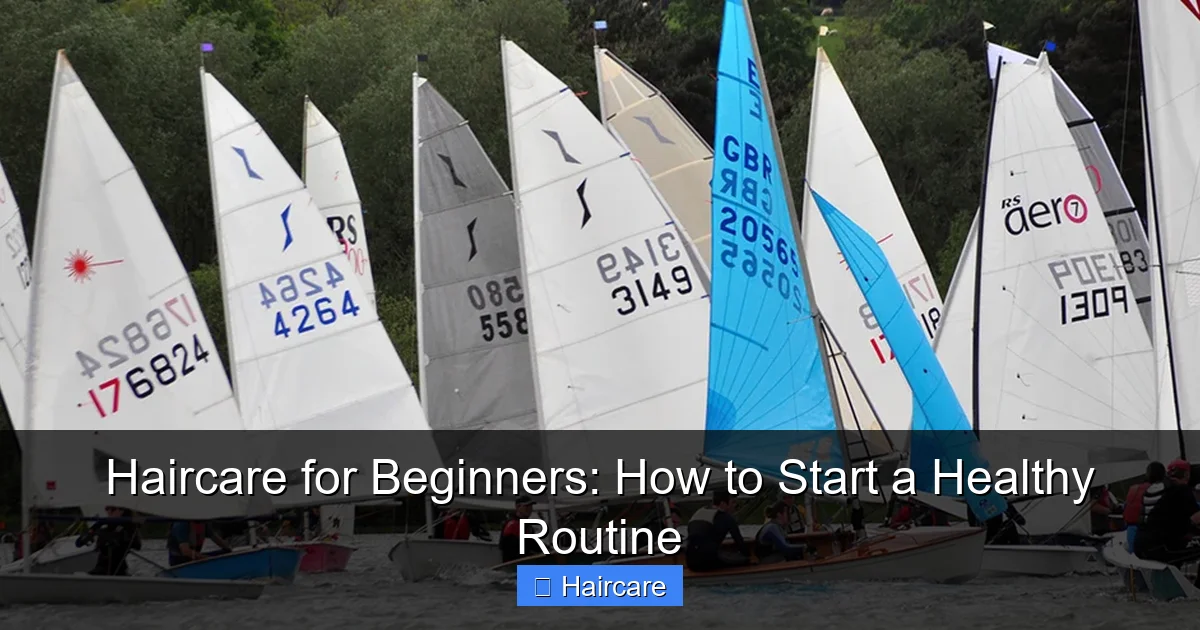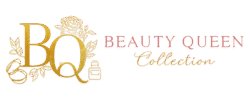
Featured image for this comprehensive guide about how to start haircare
Image source: cdn.pixabay.com
Are you staring at the endless aisle of shampoos, conditioners, and serums, feeling completely overwhelmed about where to begin your journey to luscious locks? You’re not alone! Many people dream of having strong, shiny hair but feel lost when it comes to figuring out how to start haircare. The good news is, building a healthy haircare routine doesn’t have to be complicated. It’s all about understanding your hair, choosing the right products, and establishing consistent habits.
This comprehensive guide is designed for beginners, breaking down the essentials of starting an effective healthy haircare routine. We’ll demystify the process, providing actionable tips and insights to help you achieve the vibrant, healthy hair you deserve. Get ready to embark on a journey that will transform your hair from guesswork to gorgeous!
📋 Table of Contents
Understanding Your Hair Type and Concerns
The first and most crucial step in starting haircare is getting to know your hair. Just like skincare, haircare isn’t a one-size-fits-all solution. What works wonders for one person might be detrimental to another. Understanding your specific hair type and primary concerns will guide all your product choices and routine steps.
Determining Your Hair Type
Hair types are generally categorized by texture and pattern:
| Step | Description | Key Action / Recommendation | Impact / Consideration |
|---|---|---|---|
| 1. Identify Your Hair Type | Understanding your hair’s natural characteristics is the foundation for effective care. | Determine if your hair is oily, dry, normal, fine, thick, curly, straight, color-treated, etc. | An estimated 60% of people unknowingly use products unsuitable for their actual hair type. |
| 2. Choose Basic Products | Start with essential cleansing and conditioning products tailored to your specific needs. | Select a sulfate-free shampoo and a complementary hydrating conditioner (e.g., for volume, moisture, or color protection). | Sulfate-free options can reduce frizz by up to 30% for some hair types by being less stripping. |
| 3. Establish a Wash Routine | Consistency and proper frequency are crucial for scalp health and hair appearance. | Wash 2-3 times a week; adjust frequency based on oiliness, activity level, and product build-up. | Over-washing (daily for most) can strip natural oils, leading to dryness and breakage in ~45% of individuals. |
| 4. Practice Gentle Handling | Minimize physical stress on hair, especially when wet, as it’s most vulnerable to damage. | Pat hair dry with a microfiber towel instead of vigorous rubbing; detangle gently with a wide-tooth comb. | Air-drying or using low-heat styling reduces heat damage by up to 70% compared to high-heat blow-drying. |
| 5. Observe & Adjust | Haircare is an ongoing process; products and routines may need slight tweaks. | Monitor your hair’s response over 2-4 weeks. Note changes in oiliness, shine, texture, and scalp comfort. | Dermatologists often recommend consistent use of a product for at least 4 weeks to see significant, measurable results. |
- Straight (Type 1): No natural curl. Tends to be shiny but can also be oily.
- Wavy (Type 2): Gentle “S” pattern. Can range from fine waves to loose curls.
- Curly (Type 3): Defined spirals. Prone to dryness and frizz.
- Coily (Type 4): Tight, small curls or zig-zags. Often very dry and fragile.
Beyond texture, consider thickness (fine, medium, thick) and density (how many individual strands you have).
Identifying Hair Concerns
What are your hair’s biggest challenges? Common concerns include:
- Dryness: Lacks moisture, feels rough, looks dull.
- Oiliness: Hair becomes greasy quickly, often due to an overactive scalp.
- Damage: Split ends, breakage, frizz, often from heat styling or chemical treatments.
- Frizz: Hair cuticles are raised, allowing moisture to enter and swell the hair shaft.
- Hair Loss/Thinning: Excessive shedding or noticeable reduction in volume.
- Sensitive Scalp: Itching, flaking, redness, or irritation.
The Porosity Puzzle: Why It Matters
Hair porosity refers to your hair’s ability to absorb and retain moisture. It’s determined by the state of your hair’s outermost layer (cuticle). Knowing your porosity helps you choose products that effectively hydrate and protect your hair.
- Low Porosity: Cuticles are tightly packed, making it hard for moisture to enter (but also hard to leave). Products tend to sit on top.
- Medium Porosity: Cuticles are slightly raised, allowing moisture in and out easily. Generally considered the easiest to manage.
- High Porosity: Cuticles are raised or damaged, allowing moisture to enter and escape quickly. Prone to frizz and dryness.
You can do a quick test: Drop a clean strand of hair into a glass of water. If it floats, you likely have low porosity. If it sinks slowly, medium. If it sinks quickly, high porosity.
Building Your Core Haircare Arsenal
Once you understand your hair, you can start gathering the right tools and products for your beginner haircare routine. Focus on essentials first, then gradually add specialized treatments.

Learn more about how to start haircare – Haircare for Beginners: How to Start a Healthy Routine
Image source: 60132.netministry.com
The Essentials: Shampoo and Conditioner
These are the non-negotiables. Choose a shampoo and conditioner formulated for your specific hair type and concerns. For instance:
- For Dry Hair: Look for hydrating, moisturizing, or nourishing formulas with ingredients like shea butter, argan oil, or hyaluronic acid.
- For Oily Hair: Opt for clarifying or volumizing shampoos, and lightweight conditioners. Avoid heavy oils.
- For Damaged Hair: Seek strengthening, repair, or bond-building products.
- For Color-Treated Hair: Use color-safe formulas that protect vibrancy.
- For Fine Hair: Choose volumizing or lightweight options to avoid weighing hair down.
Treatment Products for Targeted Care
These complement your core wash routine:
- Leave-in Conditioner: Provides extra hydration and detangling, especially for dry or curly hair.
- Hair Masks/Deep Conditioners: Used 1-2 times a week for intensive hydration, repair, or strengthening. Apply after shampoo, leave on for 5-20 minutes, then rinse.
- Hair Oils/Serums: Great for adding shine, taming frizz, protecting against heat, or nourishing ends. Use sparingly on damp or dry hair.
Tools of the Trade
Don’t underestimate the power of good hair tools:
- Wide-tooth Comb: Essential for detangling wet hair gently, preventing breakage.
- Microfiber Towel or Cotton T-shirt: Dries hair without causing frizz or friction damage that regular towels can.
- Heat Protectant: Non-negotiable if you use heat styling tools (blow dryer, straightener, curling iron).
- Silk or Satin Pillowcase: Reduces friction, preventing breakage and frizz, especially overnight.
Crafting Your Basic Haircare Routine
Now that you have your products, let’s put them into a simple, effective routine. Consistency is key to seeing results and maintaining a healthy haircare routine.

Learn more about how to start haircare – Haircare for Beginners: How to Start a Healthy Routine
Image source: hollowellsc.org.uk
The Wash Day Ritual
- Pre-Poo (Optional): For very dry or curly hair, apply a light oil or conditioner to dry hair 15-30 minutes before shampooing. This helps protect strands from being stripped of natural oils.
- Shampoo: Wet hair thoroughly. Apply a small amount of shampoo to your scalp and gently massage with your fingertips. Focus on cleansing the scalp, as the suds will run down and clean the ends. Rinse thoroughly until water runs clear. Many people over-shampoo; you only need to wash your hair 2-3 times a week, depending on your oiliness and activity level.
- Condition: Squeeze excess water from your hair. Apply conditioner from mid-lengths to ends, avoiding the scalp (unless it’s a scalp-specific conditioner). Detangle gently with your fingers or a wide-tooth comb. Leave on for 2-5 minutes, then rinse with cool water to seal the cuticles and enhance shine.
Post-Wash Care
- Detangle: Gently blot hair with a microfiber towel or cotton T-shirt. Apply a leave-in conditioner or detangling spray. Start detangling from the ends, working your way up with a wide-tooth comb.
- Drying: Air dry whenever possible. If blow-drying, use a heat protectant and a diffuser attachment (especially for wavy/curly hair) on a low heat setting.
- Styling Prep: Apply any styling creams, gels, or oils as needed for your desired look and hair type.
Daily & Weekly Habits for Healthy Hair
- Brushing: Use a brush designed for your hair type. For straight/wavy hair, a boar bristle brush can distribute oils. For curly/coily hair, avoid dry brushing to prevent breakage and frizz; use fingers or a wide-tooth comb on damp hair.
- Protection: Use a silk scarf or bonnet at night to protect hair from friction and preserve styles. Always use a heat protectant before any heat styling.
- Deep Conditioning: Incorporate a hair mask 1-2 times a week for an extra boost of moisture or repair.
- Scalp Massage: Gently massage your scalp for a few minutes daily to stimulate blood flow and promote `hair growth`.
Beyond the Basics: Advanced Tips for Healthy Hair
Once you’ve mastered the fundamentals, consider these tips to elevate your haircare routine even further.
Scalp Health is Key
Think of your scalp as the soil for your hair. A healthy scalp is foundational for `healthy hair`. Consider:
- Scalp Serums/Treatments: Target concerns like dryness, oiliness, or thinning.
- Scalp Exfoliation: Use a gentle scalp scrub once a month to remove product buildup and dead skin cells.
Data shows that scalp health directly impacts hair quality. A study by L’Oréal found that an unhealthy scalp can produce hair with lower shine and elasticity.
Protecting Your Tresses
Prevention is better than cure when it comes to hair damage:
- Heat Protection: We cannot stress this enough. Apply a heat protectant before using any heat tools.
- UV Protection: Just like your skin, your hair can be damaged by the sun. Use UV protective sprays or wear hats.
- Protective Styles: Braids, buns, or twists can minimize manipulation and breakage, especially for longer hair or during sleep.
Nutrition and Hydration
What you put into your body significantly impacts your hair. A balanced diet rich in vitamins (A, C, D, E, B vitamins), minerals (iron, zinc), and protein supports `hair growth` and strength. Staying hydrated by drinking plenty of water also contributes to overall hair health.
Patience and Consistency
Remember, transforming your hair takes time. Don’t expect immediate miracles. Stick with your chosen products and routine for at least 4-6 weeks to see significant changes. Be patient, be consistent, and enjoy the process of discovering what truly makes your hair thrive.
Common Haircare Mistakes to Avoid
Even with the best intentions, it’s easy to fall into common traps that hinder your hair goals. Here are a few to steer clear of as you learn how to start haircare:
- Over-washing or Under-washing: Washing too frequently can strip natural oils, leading to dryness or increased oil production. Washing too infrequently can lead to buildup, dullness, and scalp issues. Find your hair’s sweet spot, usually 2-3 times a week.
- Using the Wrong Products: Using heavy, rich products on fine, oily hair, or lightweight products on dry, thick hair, won’t yield optimal results. Always refer back to your hair type and concerns.
- Excessive Heat Styling Without Protection: This is one of the fastest ways to damage your hair, leading to breakage, split ends, and dullness. Always use a heat protectant!
- Rough Handling of Wet Hair: Wet hair is at its most vulnerable. Rubbing aggressively with a towel or brushing roughly can cause significant breakage. Be gentle!
- Ignoring Scalp Health: A neglected scalp can lead to dandruff, oiliness, itchiness, and even impede `hair growth`. Treat your scalp with the same care you give your hair and skin.
- Expecting Overnight Results: Hair growth cycles take time. Give any new routine at least a month to show noticeable improvements.
Conclusion
Embarking on your haircare journey doesn’t have to be daunting. By taking the time to understand your unique hair type and concerns, investing in a few core products, and establishing a consistent routine, you’re well on your way to achieving beautiful, healthy hair. Remember, `starting haircare` is a process of learning and adaptation. Don’t be afraid to experiment gently, listen to what your hair tells you, and enjoy the journey to your best hair ever. With these actionable tips, you now have the foundation to confidently begin your transformative healthy haircare routine!
Frequently Asked Questions
I’m completely new to this. How do I start my haircare journey?
Starting your haircare journey begins with understanding your unique hair type and its specific needs, such as whether it’s oily, dry, fine, thick, or color-treated. This foundational knowledge will guide you in choosing the right products and establishing an effective routine tailor-made for your hair’s specific requirements.
What’s the very first step to building a healthy haircare routine?
The absolute first step to starting a healthy haircare routine is to accurately identify your hair type and understand any specific concerns you might have, like frizz, oiliness, or dryness. This crucial insight ensures you select products that truly benefit your hair and scalp, rather than causing further issues or being ineffective.
What are the essential products I need to start a basic haircare routine?
For beginners starting a basic haircare routine, you’ll primarily need a good quality shampoo and conditioner specifically formulated for your hair type. Additionally, consider a leave-in conditioner or a lightweight hair oil to provide extra moisture, protection, and to help with detangling, ensuring your hair stays soft and manageable.
How often should I wash my hair when I’m just starting haircare?
When you’re just starting haircare, the ideal washing frequency varies, but 2-3 times a week is a common and healthy starting point for most people. This allows your scalp to maintain its natural oils without becoming overly greasy or dry, preventing potential irritation or product buildup.
Can you give me a simple daily or weekly haircare routine for beginners?
A simple routine for beginners involves washing your hair with shampoo and conditioner 2-3 times a week, gently towel-drying, and then air-drying when possible to reduce heat exposure. On non-wash days, you can gently brush your hair with a wide-tooth comb and consider using a dry shampoo if your roots get oily.
How long does it take to see results from a new haircare routine?
Consistency is key when starting a new haircare routine, and you can often begin to notice subtle improvements in texture, shine, and manageability within 2-4 weeks. For more significant changes, such as reduced breakage or improved scalp health, allow at least 6-12 weeks for your hair to fully adapt and show the full benefits of the new regimen.
